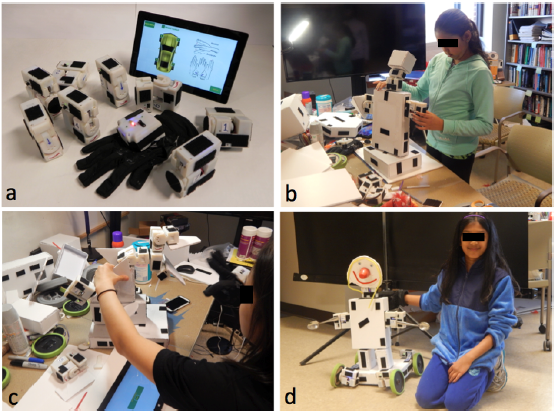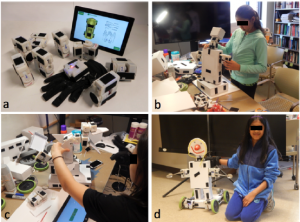Building from our previous work we explore HandiMate, a robotics kit which enables users to construct and animate their toys using everyday craft materials [32]. The kit contains eight joint modules, a tablet interface and a glove controller. Unlike popular kits, HandiMate does not rely on manufactured parts to construct the toy. Rather this open ended platform engages users to pursue interest driven activities using everyday objects, such as cardboard, construction paper, and spoons. These crafted parts are then fastened together using Velcro to the joint modules and animated using the glove as the controller. In this paper, we discuss the results from two user studies which were designed to understand the affinity of HandiMate among children. The first study reveals that children rated the HandiMate kit as gender-neutral, appealing equally to both female and male students. The second study discusses the benefits of engaging children in engineering design with HandiMate, which has been observed to bring out children’s tacit physics-based engineering knowledge and facilitate learning.
HandiMate: Exploring a Modular Robotics kit for Animating Crafted Toys
Authors: Sang Ho Yoon , Ansh Verma , Kylie Peppler, Karthik Ramani
In Proceedings of the 14th International Conference on Interaction Design & Children (IDC'15), Tufts University, USA, 2015

Sang Ho Yoon
Sang Ho Yoon is currently working at Microsoft, Seattle, WA.
He received his PhD at Purdue University and his B.S & M.S degrees from Carnegie Mellon University in 2008 with major in Mechanical Engineering and minor in Robotics. He worked at Research Department in LG Display & LG Electronics for 5 years. There, he involved in product development for consumer electronics as well as the futuristic products including 'Transparent & Public Display', 'Assistive/Rehabilitation Robot', and 'Smart Car User Interface'.
He is particularly interested in applying novel sensing techniques to bring the new forms of input metaphor for Human-computer interaction. Areas of interest include wearable/tangible interface, sensing techniques & fabrication, and novel input device. Currently, his research aims at combining the state-of-art machine learning approaches with novel sensing technique to better support natural human-computer interaction.
[Personal Website][LinkedIn]

